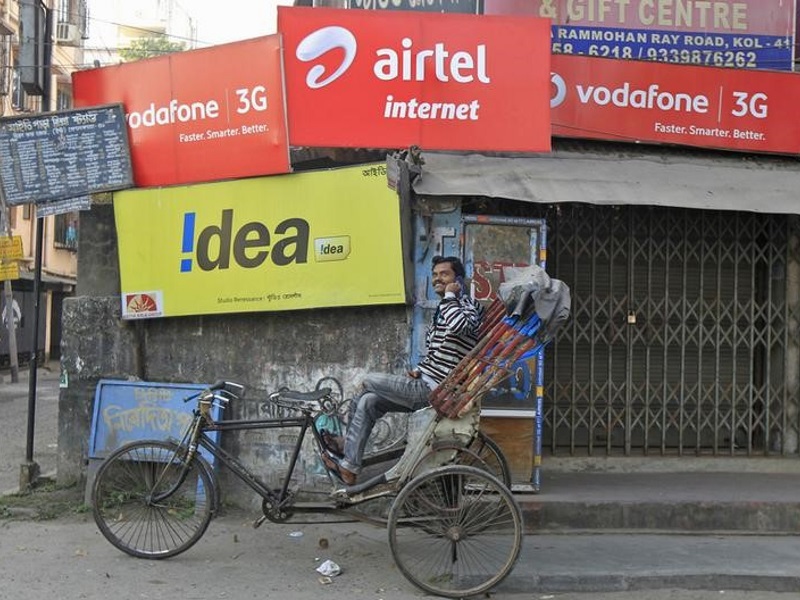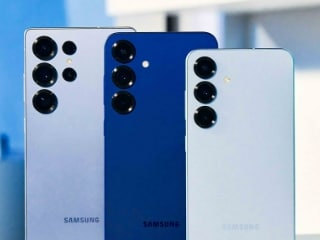- Home
- Telecom
- Telecom News
- DoT Study Finds Call Drop Situation Has Improved in Delhi
DoT Study Finds Call Drop Situation Has Improved in Delhi

Call drop situation in Delhi has improved but telecom operators are still beyond the quality benchmark set for mobile telephony services, Telecom Minister Ravi Shankar Prasad said on Wednesday.
"Call drops situation has improved between July-October period. I am happy with the improvement but telecom operators still need to work to make their network better," Prasad told reporters in New Delhi.
The minister shared the data based on a survey by Term cell, the vigilance and resource monitoring arm of the Department of Telecom.
The data showed that call drop situation on the mobile network has improved but the operators are still beyond the quality parameters set for call drops.
As per benchmark, not more than 2 percent of the calls made on a telecom operator's network should fail or disconnect automatically due to network-related faults.
Call drop on the network of the country's largest operator Bharti Airtel improved from the range of 2.92 - 17.77 in August to 0.08-2.98 at the end of October, as per tests conducted by the Term Cell in Delhi on various roots.
Call drop on Idea Cellular network improved from 3.34-10.9 to 0.14-2.65, Vodafone 1.53-6.63 to 0.3-2.97, Reliance Communications 1.53-24.83 to 0.02-5.15 and Aircel from 0.77-6.21 to 0.29-2.66 during the period under review.
Prasad said that situation has improved because of additional installation of mobile towers, repairing of non-functional cell sites and improvement in network design.
"Earlier about 35,000 cell sites were found to be defective. In the last 25,598 were found to be defective. Out of which 13,775 have been repaired and 13,823 are pending," Prasad said.
There are total 1.833 million mobile sites in India installed by telecom operators.
On Tuesday, a Trai report said the performance of operators deteriorated during the April-June quarter on sequential basis with regard to worst-affected mobile sites or cells having more than 3 percent call drop rate.
The report on the operators' performance said that mobile operators had a call drop rate of as high as 24.59 percent for 2G services and 16.13 percent for 3G services in the April-June quarter of 2015. Prasad said that telecom operators have installed additional mobile sites, that include 7,528 sites for 2G and 14,751 for 3G, in the country during July-October 2015.
"In Delhi, private operators have installed 760 sites for 2G and 1,332 for 3G. Telecom operators have started installing in-building solution (IBS) as well to improve their network. They have installed 252 IBS for 2G and 484 for 3G," he said.
BSNL has installed around 25,000 mobile towers across the country in the last one year and is installing 6,000 more towers.
"I have also asked MTNL to improve situation in Lutyens Delhi and surrounding area. They have installed 26 sites for 2G and 12 for 3G. I have also asked MTNL to improve network at Parliament building. It is heritage building and needs various
permissions. I have asked them to install IBS there," Prasad said.
The minister said that New Delhi Municipal Corporation has also agreed to offer its premises for installing mobile towers and the Department of Posts has also been asked to provide space at Post Offices for installation of towers.
"I have asked them to work out a reasonable tariff," he said.
The minister refused to intervene on the call drop penalty proposed by the Telecom Regulatory Authority of India from January 1, 2016.
He also said that fear of radiation among people has come down after his active involvement, as "campaign against mobile towers and complaints about call drops cannot go hand-in-hand".
Get your daily dose of tech news, reviews, and insights, in under 80 characters on Gadgets 360 Turbo. Connect with fellow tech lovers on our Forum. Follow us on X, Facebook, WhatsApp, Threads and Google News for instant updates. Catch all the action on our YouTube channel.
Related Stories
- Samsung Galaxy Unpacked 2025
- ChatGPT
- Redmi Note 14 Pro+
- iPhone 16
- Apple Vision Pro
- Oneplus 12
- OnePlus Nord CE 3 Lite 5G
- iPhone 13
- Xiaomi 14 Pro
- Oppo Find N3
- Tecno Spark Go (2023)
- Realme V30
- Best Phones Under 25000
- Samsung Galaxy S24 Series
- Cryptocurrency
- iQoo 12
- Samsung Galaxy S24 Ultra
- Giottus
- Samsung Galaxy Z Flip 5
- Apple 'Scary Fast'
- Housefull 5
- GoPro Hero 12 Black Review
- Invincible Season 2
- JioGlass
- HD Ready TV
- Laptop Under 50000
- Smartwatch Under 10000
- Latest Mobile Phones
- Compare Phones
- Realme P4x 5G
- OnePlus Ace 6T
- OPPO A6x 5G
- Samsung Galaxy Z TriFold
- Poco F8 Ultra
- Poco F8 Pro
- Huawei Mate 80 RS Master Edition
- Huawei Mate 80 Pro Max
- Asus ProArt P16
- MacBook Pro 14-inch (M5, 2025)
- Poco Pad M1
- Poco Pad X1
- Just Corseca Skywatch Pro
- Honor Watch X5
- Acerpure Nitro Z Series 100-inch QLED TV
- Samsung 43 Inch LED Ultra HD (4K) Smart TV (UA43UE81AFULXL)
- Asus ROG Ally
- Nintendo Switch Lite
- Haier 1.6 Ton 5 Star Inverter Split AC (HSU19G-MZAID5BN-INV)
- Haier 1.6 Ton 5 Star Inverter Split AC (HSU19G-MZAIM5BN-INV)
















